
Brown is the New Green
Mae-ling Lokko
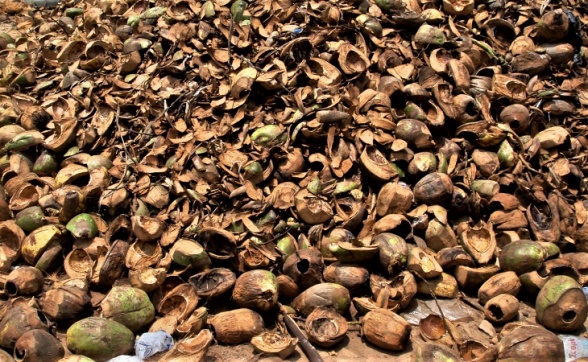
Coconut Husk Waste Piles in Urban Areas of Accra. Airport Residential, Ghana, 2014. Photo: Mae-ling Lokko
Coconut Husk Waste Piles in Urban Areas of Accra. Airport Residential, Ghana, 2014. Photo: Mae-ling Lokko
Agriculture has for centuries been the bloodline for Africa’s growth, as well as its looting. Only recently have different parts of the continent awakened to the potential of activating profits from the agro-upcycling economy to serve as an engine for development. This photo essay, deriving from my visits to coconut-farming operations in 2014–15, casts light on Ghana’s diverse farming and manufacturing industry around the coconut and its husk – a resilient material with a vast number of applications. Coconut farmers, who comprise about 10% of Ghana’s rural population, serve as the engine of the country’s coconut industry, leveraging environmental resources, shared property, political assets and their social networks and markets to sustain the production of 6,000 metric tons annually.[1] In my visits, I met two distinct groups of coconut producer groups, which engage with domestic coconut-water production and foreign coconut-oil production respectively.
Ghana’s growing domestic coconut-water economy is run by small-scale coconut farmers and urban traders who move between farm and city. Coconut farmers in the Central and Eastern region typically farm on 2–3 acres, usually leased from or owned by village chiefs. The highly flexible and adaptable informal network of urban traders who buy their coconuts negotiate different modes of distribution, sale and disposal of coconuts. They often have family and community ties with small-scale farms, which they use to negotiate coconut pickups from farms and to coordinate regular drop-offs at designated spots in the city. The disposal of coconut husk waste is a significant challenge for such urban coconut traders, who are prohibited from dumping it in mainstream garbage collection points due to its high bulk density. Instead, the husks are typically burned in the open and at night, to minimise complaints about pollution form husk combustion. Husk collection therefore represents an massive opportunity for coconut traders to engage in upcycling activities.
In Ghana’s Western region, 60% of the country’s coconut yield is produced on a large scale for export by coconut farmers belonging to cooperatives. Studies on farming cooperative membership have shown the broadening of ‘cultural capital’ owned by such stakeholders, including the access of farmers to production and harvesting assets, education, health security and distribution channels.[2] Such coconut farming cooperatives include a sophisticated circular economy for using every by-product from the coconut – the dried meat (copra) is processed for coconut-oil production and any waste is used as feed for pig-farming, also a growing industry. Large volumes of oil are sold by the barrel to urban markets in Ghana or transported by truck to larger lucrative Nigerian markets.
In both coconut food-producing groups, the husk is left behind and remains a problematic disposal challenge. The coconut husk is comprised of high-strength, high-surface-area coir fibres, bounded by hydrophilic pith dust capable of melting uniformly at relatively low heat and pressure. Relative to other agricultural waste, the coconut fibre has superior mechanical advantage due to its high-structural lignin content (38–44%), over twice that of other agricultural by-products, high strength-to-mass ratio and low energy-conversion properties into particleboard and fibreboard products.[3]
Progress in interdisciplinary and academic-industrial research globally have led to greater understanding of quality control and pre-processing of husk into superior building products. Opportunities for adding value to the husk, including open-air drying and husk milling to separate fibres to reduce transport costs, can be used to generate new revenue streams for producer groups. As awareness and appreciation of food waste-derivative products grow, not only does upcycling bring typically marginalised stakeholders to the upcycling platform, but such alliances will play a pivotal role in closing intersectional material life-cycle gaps. Brown is the new green.
[1] Everest Amponsah, ‘The Vulnerability of Small-Scale Farmers in the Value Chain of Agricultural Commodities: A Case Study of Coconut Chain in Ghana’, Master’s Thesis, (Rotterdam: Erasmus University, 2010).
[2] Karen O’Brien, Robin Leichenko, Ulka Kelkar, Henry Venema, Guro Aandahl, Heather Tompkins, Akram Javed, Suruchi Bhadwal, Stephan Barg, Lynn Nygaard and Jennifer West, ‘Mapping Vulnerability to Multiple Stressors: Climate Change and Globalization in India’, Global Environmental Change 14 (4), 2004, pp. 303–13.
[3] S. Greer, ‘Converting Coconut Husks into Binderless Particle Board’, Mechanical Engineering(Waco, Texas: Baylor University, 2008); Jan van Dam, Martien van den Oever, Wouter Teunissen, Edwin Keijsers and Aurora Peralta, ‘Process for Production of High Density/High Performance Binderless Boards from Whole Coconut Husk’, Part 1: “Lignin as Intrinsic Thermosetting Binder Resin”, Industrial Crops and Products 19 (3), 2004, pp 207–16; Mae-ling Lokko, Michael Rowell, Anna Dyson, and Alexandra Rempel “Development of Affordable Building Materials Using Agricultural Waste By-Products and Emerging Pith, Soy and Mycelium Biobinders’, in Pablo La Roche and Marc Schiler, ed., 32nd International Conference on Passive and Low Energy Architecture Proceedings(Los Angeles: PLEA, 2016), pp. 881–87.
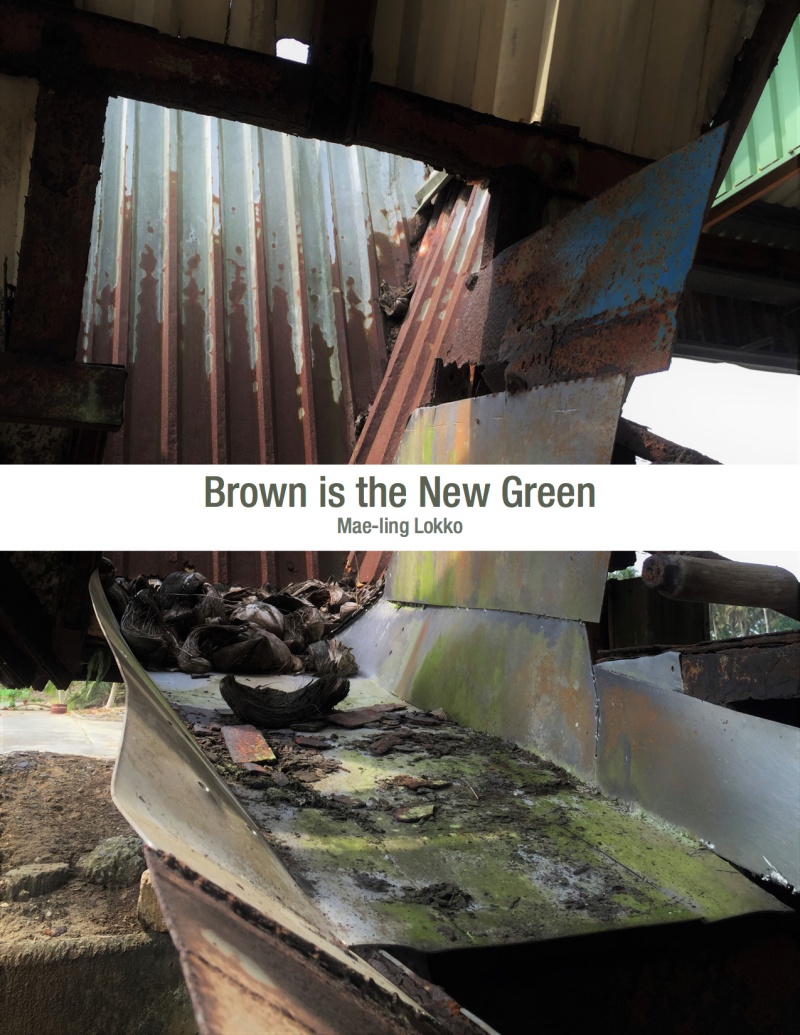
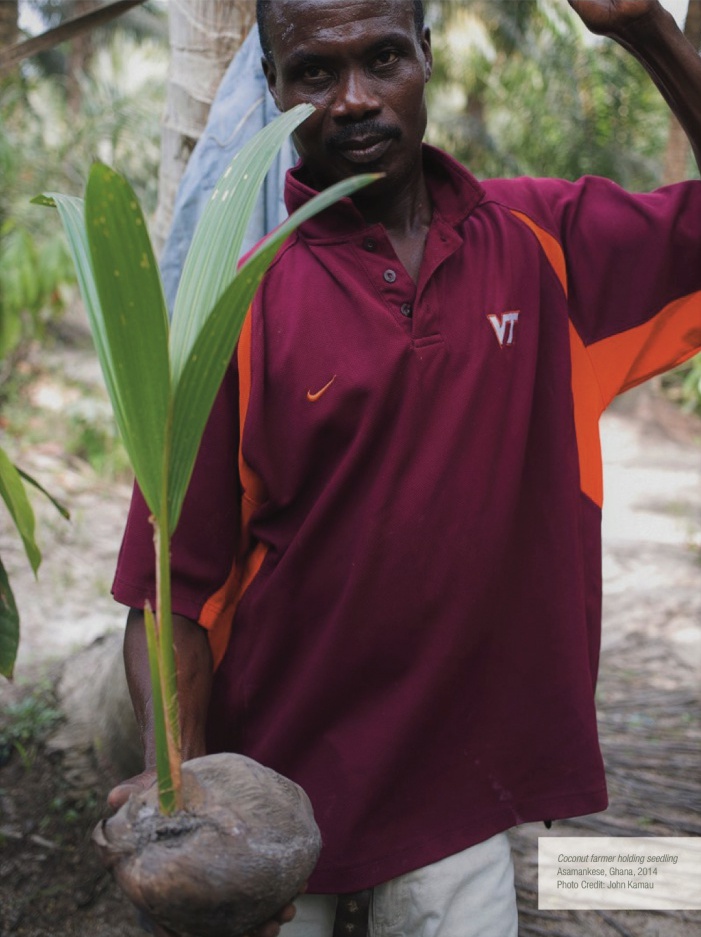

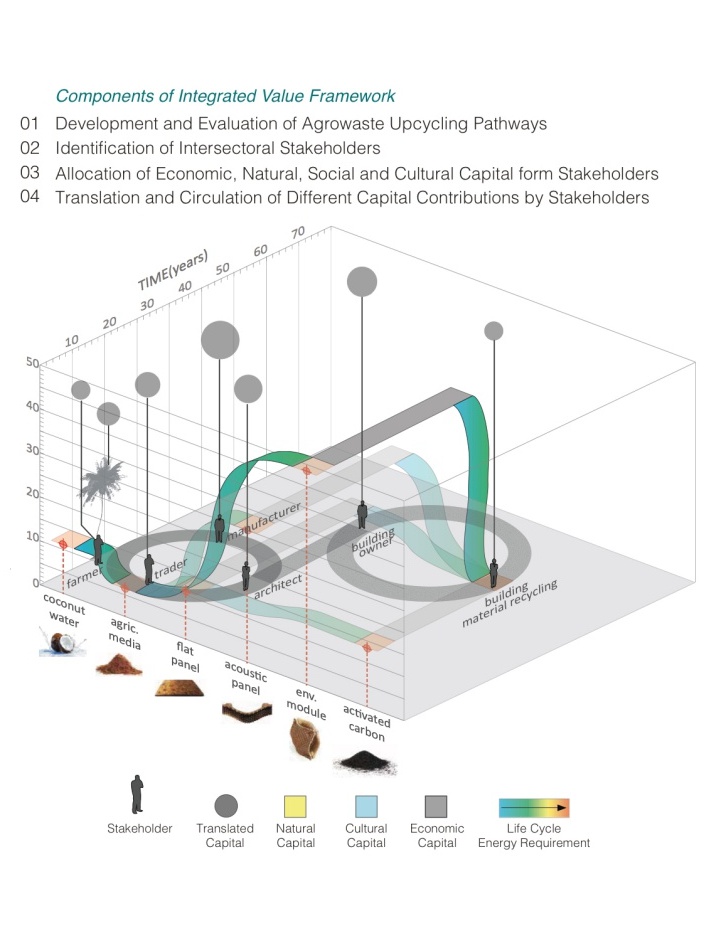
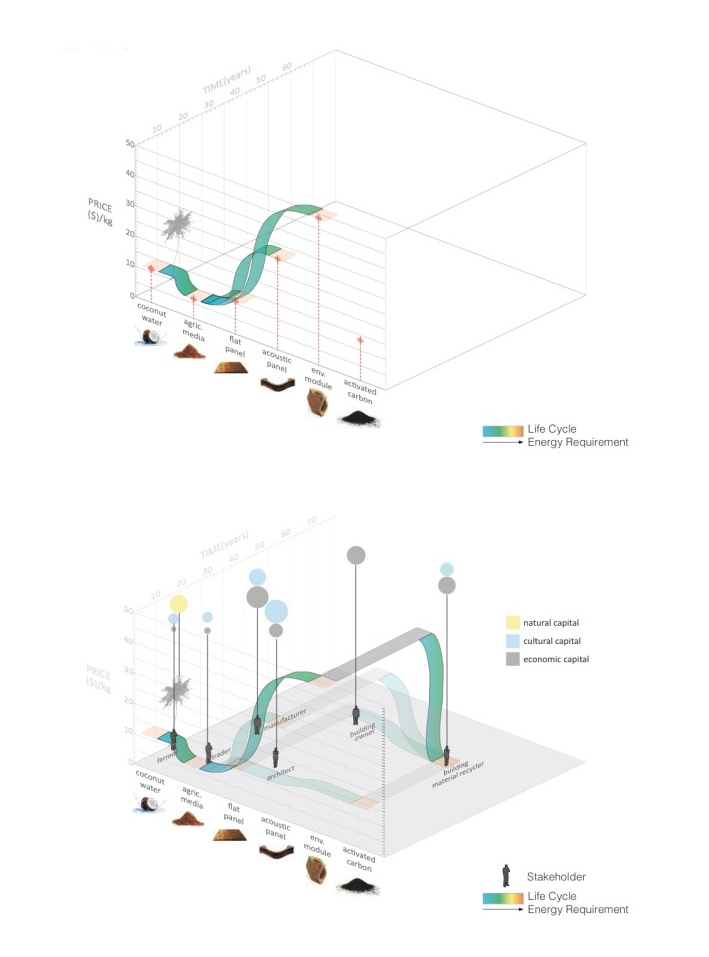
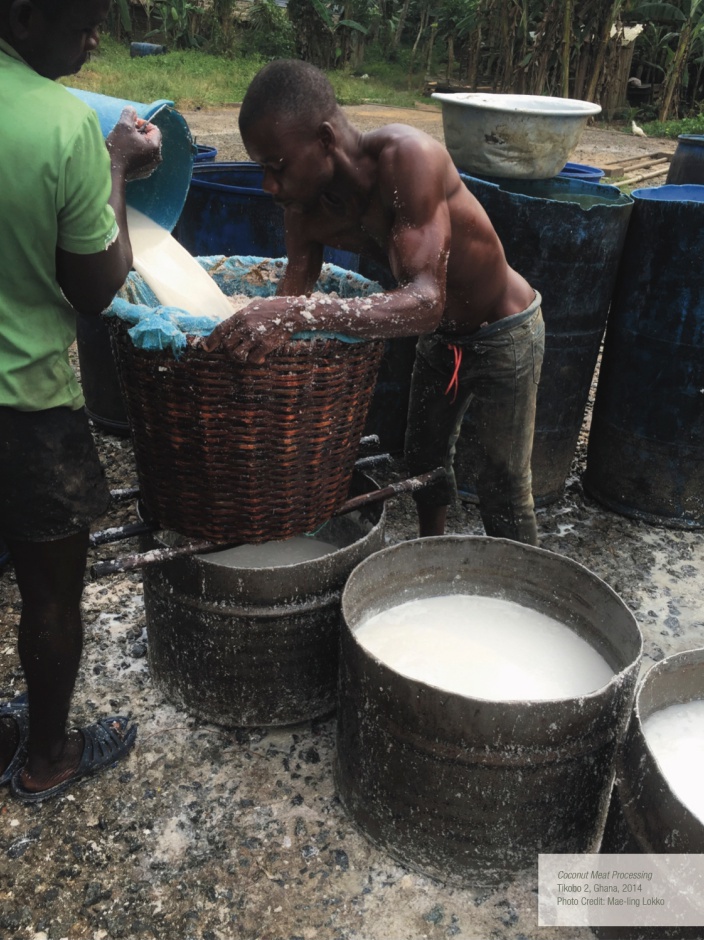

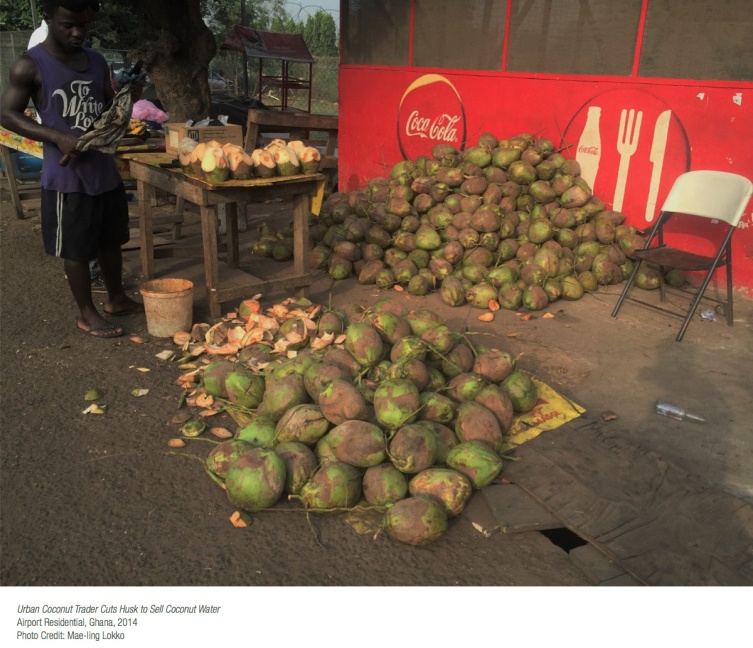
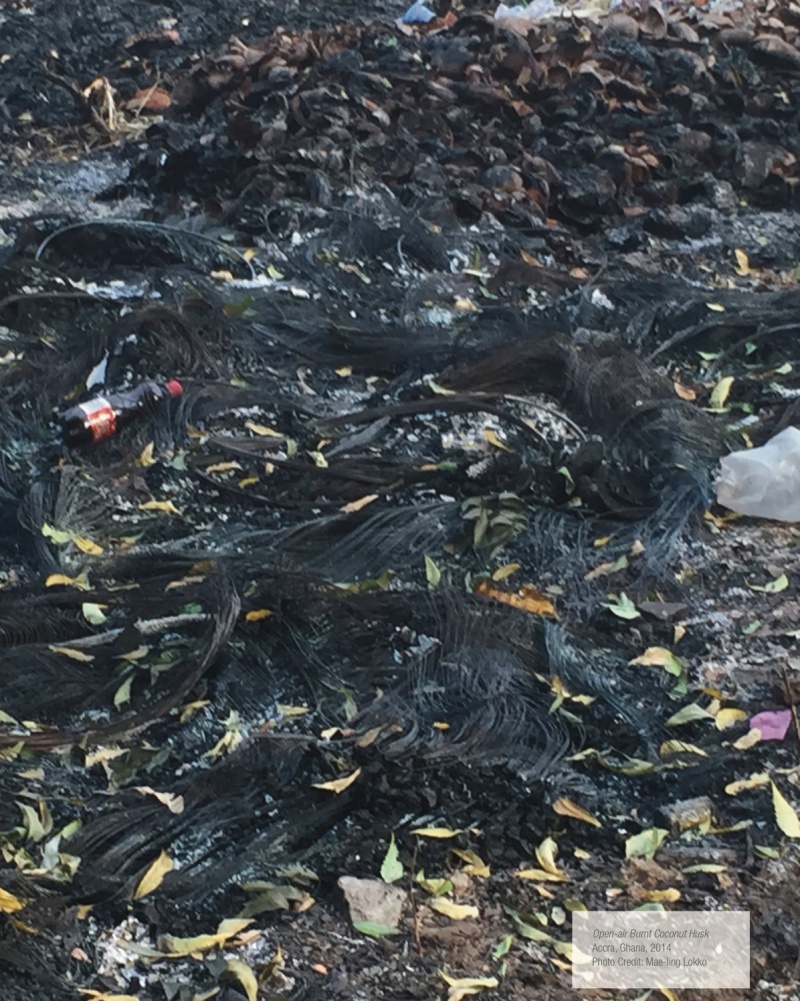


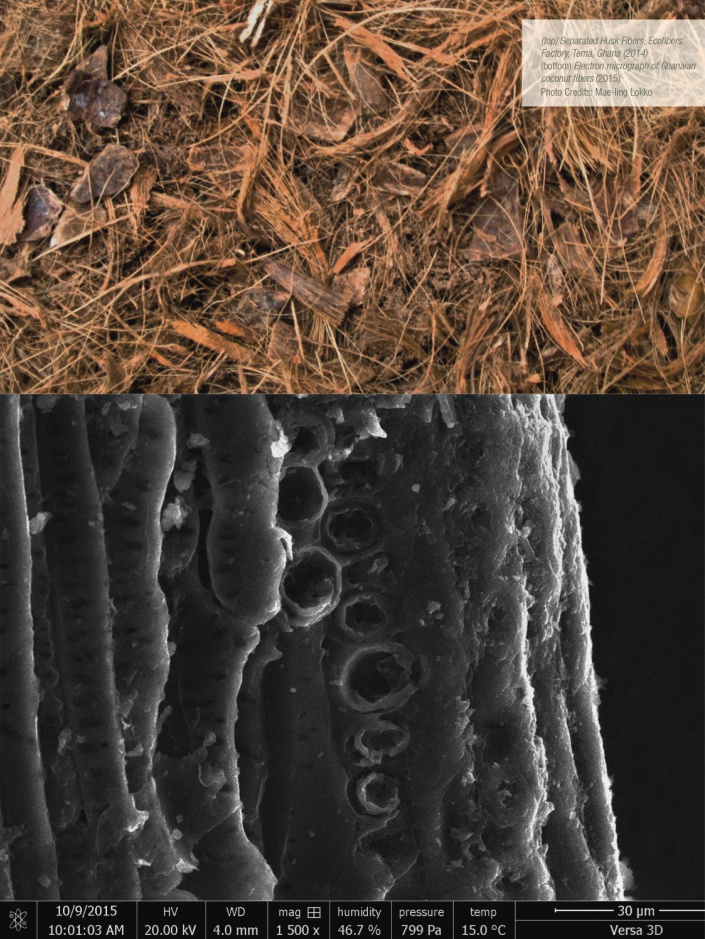


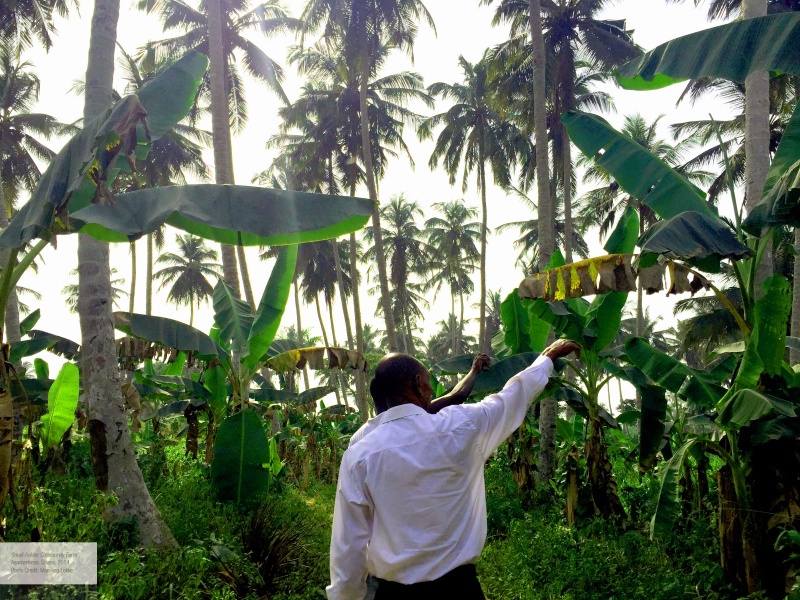
Download this article as PDF
Mae-ling Lokko
Mae-ling Lokko (Saudi Arabia) lives between Accra and New York. Trained as an architectural historian and material technologist, Lokko is an Assistant Professor at Rensselaer Polytechnic Institute, New York, USA whose work centers on the upcycling of agro-waste and biopolymer materials into 'high' performance building material systems. Inspired by emerging multidisciplinary research on next generation bio-composite green materials, as well as Ghanaian contemporary art waste upcycling, Lokko’s work often integrates a broad range of technical, environmental, political and cultural criteria that questions contemporary material-value systems and evolves material upcycling criteria. Recent exhibitions include ANO Institute of Contemporary Arts, Accra, Ghana (2017); Mmofra Foundation Climate Change Exhibition, Accra, Ghana (2017); Chale Wote Festival Accra, Ghana (2016); Rotch Golden Cube, Troy, USA (2016); and Advanced Energy Conference, New York, USA (2016).
- Notes on Design & Empire
Joasia Krysa - Learning from Liverpool: An Introduction
Emily King and Prem Krishnamurthy - Empire Remains Christmas Pudding
Cooking Sections - Contents of Ostrich’s Stomach
Paul Elliman - Brown is the New Green
Mae-ling Lokko - Designing Brazil Today
Frederico Duarte - UTOPIA and the Metainterface
Christian Ulrik Andersen - Colophon

